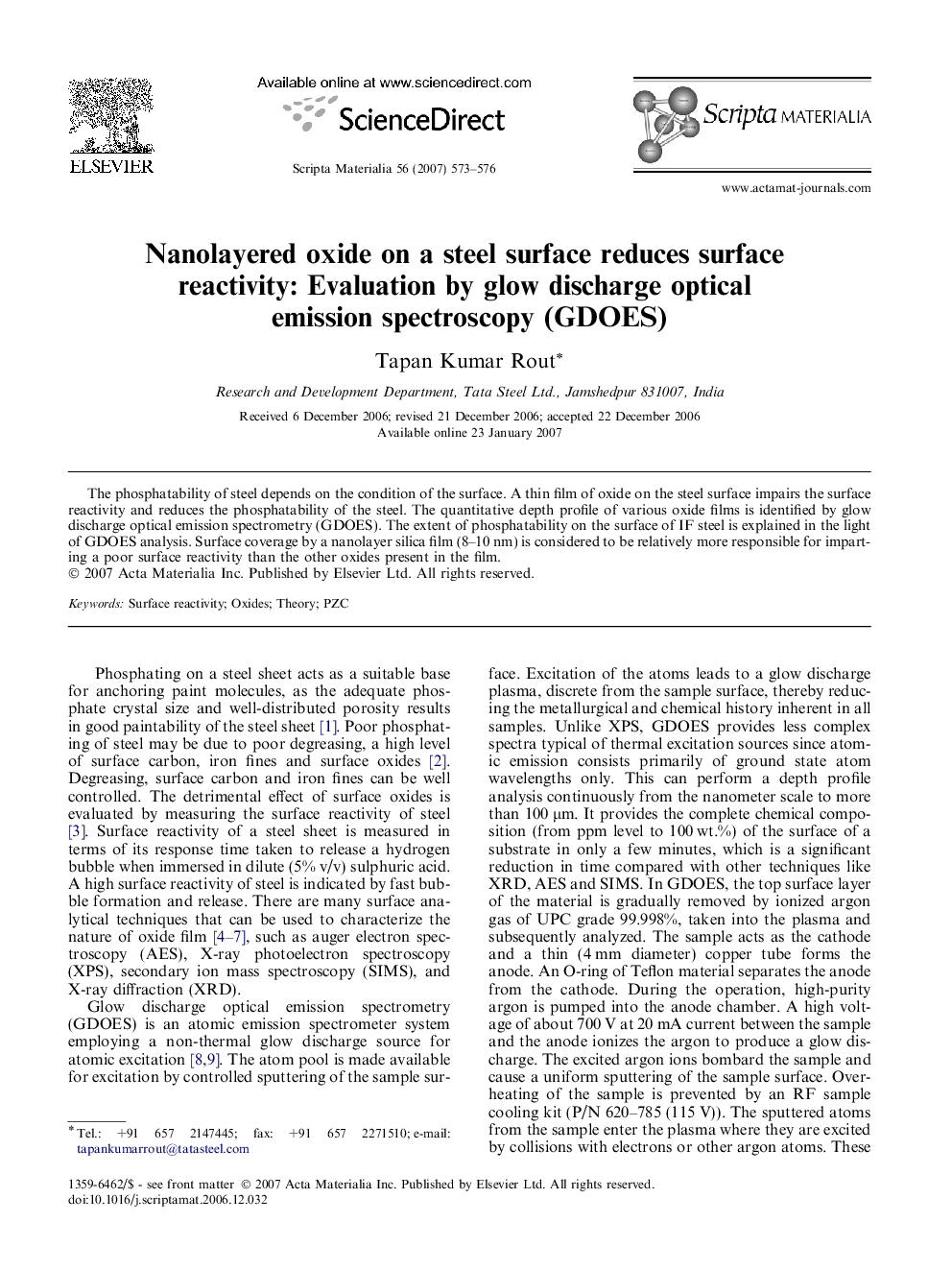| Article ID | Journal | Published Year | Pages | File Type |
|---|---|---|---|---|
| 1501643 | Scripta Materialia | 2007 | 4 Pages |
Abstract
The phosphatability of steel depends on the condition of the surface. A thin film of oxide on the steel surface impairs the surface reactivity and reduces the phosphatability of the steel. The quantitative depth profile of various oxide films is identified by glow discharge optical emission spectrometry (GDOES). The extent of phosphatability on the surface of IF steel is explained in the light of GDOES analysis. Surface coverage by a nanolayer silica film (8–10 nm) is considered to be relatively more responsible for imparting a poor surface reactivity than the other oxides present in the film.
Keywords
Related Topics
Physical Sciences and Engineering
Materials Science
Ceramics and Composites
Authors
Tapan Kumar Rout,
